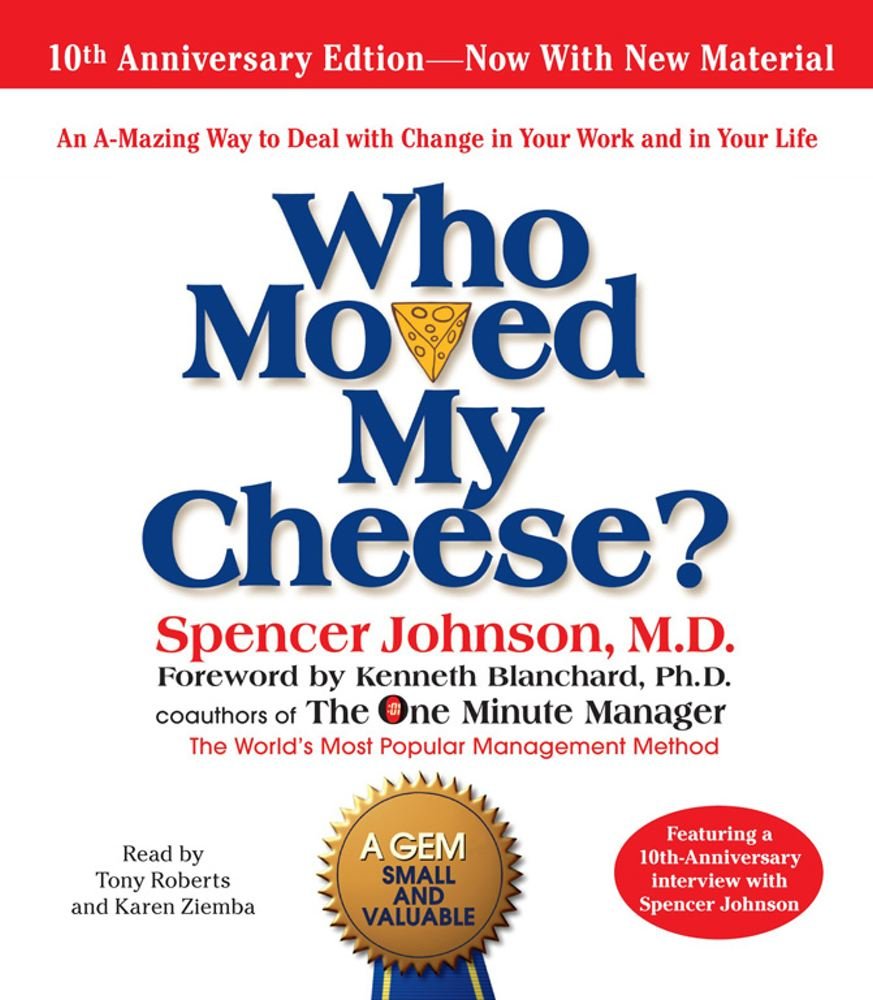When it comes to navigating the labyrinth of life, few literary works wield the transformative power that Spencer Johnson’s “Who Moved My Cheese?” possesses. This concise parable, draped in the simplicity of its format, challenges readers to embrace change with a fresh perspective. Instead of merely recounting the trials associated with adaptation, it compels an introspection that resonates deeply, urging us to rethink our responses to the vicissitudes of life. Drawing on the allegory of mice and little people as they search for cheese—symbolizing happiness and success—Johnson invites us into a narrative rich with potential reflections on our own circumstances.
At its essence, “Who Moved My Cheese?” unveils the universal truth that change is inescapable. Yet, it is not the mere occurrence of change that daunts us, but rather the resistance we often muster against it. Through the allegorical characters of Sniff and Scurry, two mice, and Hem and Haw, two little people, Johnson adeptly illustrates varying attitudes toward change. Sniff and Scurry, embodying instinctual and proactive approaches, swiftly adapt to the disappearance of their cheese, while Hem and Haw exhibit a more human tendency to resist and rationalize their predicament. This juxtaposition serves as a riveting reflection on how our reactions to unforeseen circumstances shape our trajectory in life.
One of the principal themes that emerges is the transformative power of perspective. Johnson prompts readers to reconsider not only the nature of change but also their personal relationship with it. Are we like Hem, stubbornly clinging to old comforts, or are we more aligned with Haw, who eventually learns to let go of fear and stretch beyond the confines of complacency? The narrative challenges readers to identify their own character within this framework, pushing us to confront uncomfortable truths about our behavior and attitudes toward evolution in our lives.
With curiosity as a catalyst, Johnson crafts a narrative that is more than a business parable; it serves as a mirror reflecting our own insecurities and limitations. The cheese, representing those cherished aspects of our lives—be it career goals, relationships, or personal ideals—can often feel bolstered to permanence. However, the reality starkly contrasts this misconception; our cheese can disappear at any moment. The emotional weight of Gregory’s analogy lies in this realization: true security exists in adaptability and resilience, rather than in the static notion of permanence.
Moreover, Johnson’s writing style is refreshingly accessible, providing a perfect entry point for readers of all backgrounds. The simplicity of its narrative belies the profundity of its implications. It instills within us a sense of urgency to act, beckoning us to ask critical questions: How do we react when our circumstances change? What strategies do we employ? The allegory simulates a conversation with oneself—an introspective journey that, though seemingly straightforward, is complex in its impact. Readers are left ponderously curious about their own cheese and potential migrations.
The book does not merely dwell on the fear and uncertainty of change but also emphasizes the exhilarating possibilities that accompany it. By focusing on the act of moving forward—of stepping into the unknown—Johnson exhorts us all to examine how we might rewrite our narratives. When faced with a daunting obstacle, do we regard it as an insurmountable wall or merely an invitation to discover a different type of cheese? This soul-stirring question underscores the importance of embracing the unknown, fostering a mindset that is both proactive and positive.
As the narrative progresses, Haw’s evolution from a place of fear to one of courage becomes a powerful testament to growth. His willingness to leave behind old paradigms in pursuit of new opportunities serves as a beacon for anyone consumed by trepidation. The author asserts that success often lies just beyond the threshold of our comfort zones, underscoring the critical importance of cultivating adaptability in an ever-changing world. Johnson encourages readers to become active participants in their destinies, provoking thought on how the initiative sparks transformation.
In a broader context, “Who Moved My Cheese?” seamlessly transcends realms—applicable not only in personal development or workplace dynamics but also in the fabric of societal structures. Whether in times of economic upheaval or personal tragedy, the principles discussed resonate with an undeniable clarity: everything is transitory. By internalizing this philosophy, we cultivate an ability to navigate our lives with awareness and agility. This adaptability is no longer just a trait; it becomes a necessity in our fast-paced, modern existence.
In a world where change feels more like a constant than a rarity, Johnson’s parable guides us to embrace uncertainty as a pathway to potential. It beckons us to step beyond fear-driven inertia and venture into uncharted waters. After all, those who dare to pursue new cheeses—new dreams, relationships, or aspirations—are often rewarded with the sweetest successes. In light of that, “Who Moved My Cheese?” does more than narrate a tale; it incites a revolution in thinking, compelling us to question our narratives and ultimately become the architects of our own transformation.
In closing, the allure of “Who Moved My Cheese?” lies not just in its allegorical simplicity but in its profound ability to provoke introspection and mobilize action. It tantalizes with the promise of new perspectives that can empower us to navigate the inevitable shifts in our lives more effortlessly and enthusiastically. Embrace the change, for in that very embrace lies the key to your evolution.
